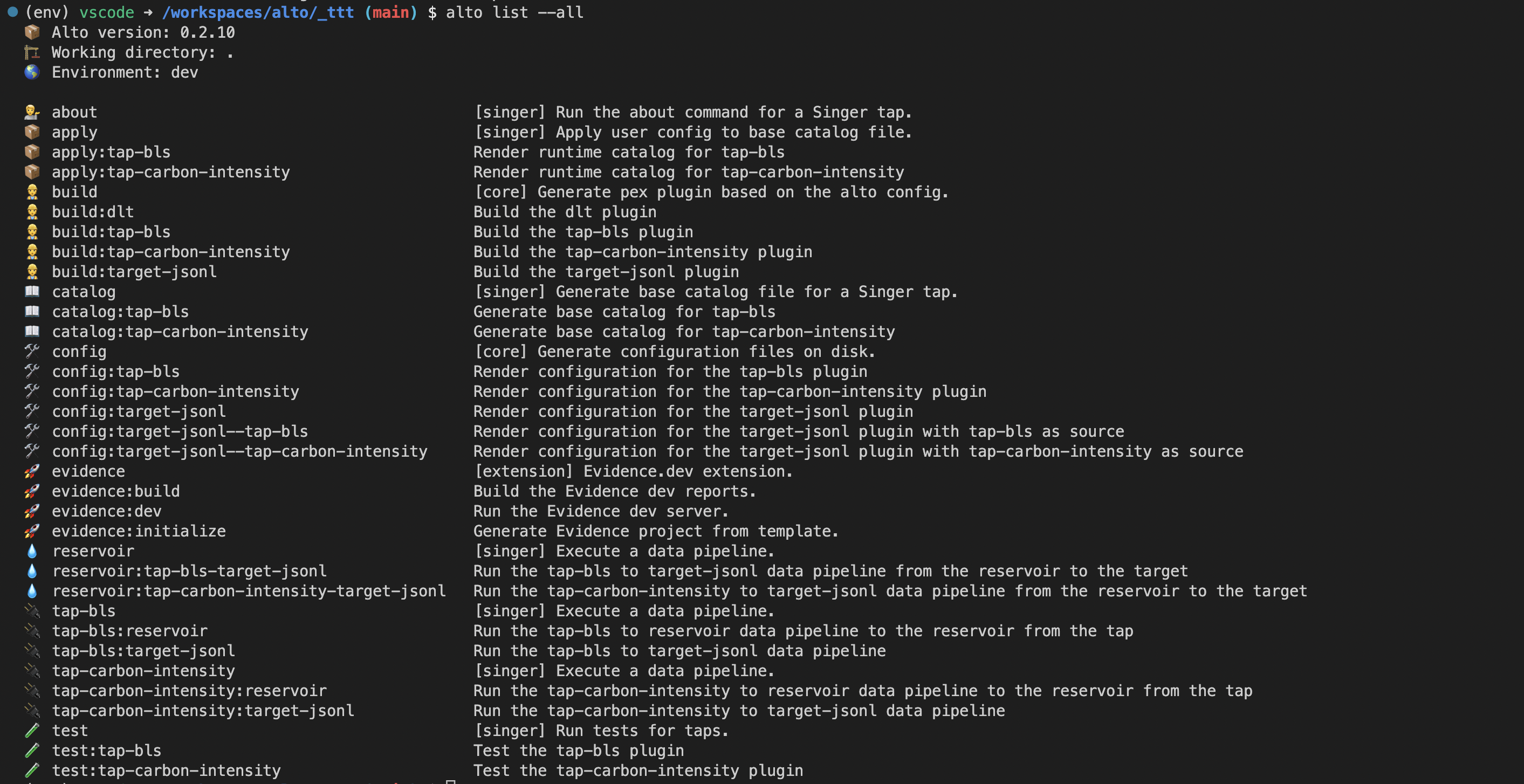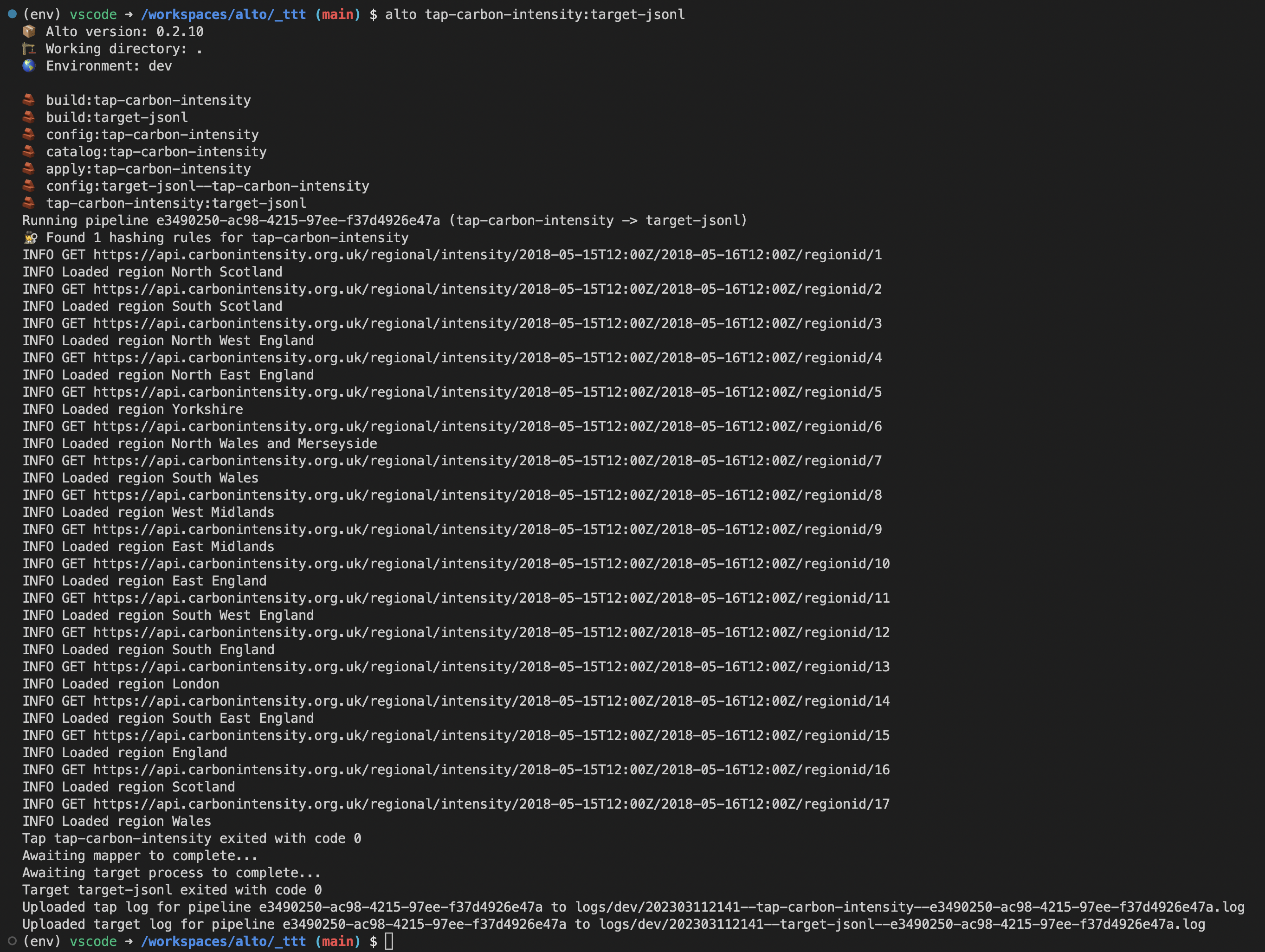Alto Quickstart
Let's run our first pipeline with Alto in 2 minutes.
Getting Started
Get started by creating a new alto project.
What you'll need
- Python 3.8+
- pipx (optional, you can use
pipinstead)
Generate a new project
Generate a ready-to-run starter project:
pipx install singer-alto
alto init
You can type this command into Command Prompt, Powershell, Terminal, or any other integrated terminal of your code editor. You will be prompted for your preferred configuration format (toml, yaml, or json) as well as a project name. This name is used to determine where your cached PEX files, catalogs, state, and data reservoir are materialized.
List the available tasks
If your configuration were empty, you would see the following running alto list:

These are what are called top-level tasks. Each of these tasks has subtasks based on your alto.{yaml,toml,json} configuration file. It is the subtasks that actually do the work.
Running the alto list --all command in the default starter project will show you something like this:

As you can see, the default project has a lot of tasks scaffolded right off the bat! Remember, all of these tasks are derived entirely from your configuration. We will dive deeper into configuration later, but do take a glance at the config file in your project when your ready.
Now that we have verified your project is ready to go, lets run a data pipeline (wait, already?!).
Run a data pipeline
Run a data pipeline from tap-carbon-intensity to target-jsonl:
alto tap-carbon-intensity:target-jsonl
Remember, because alto is scaffolded over doit which is a Make-like task runner -- you can simply run the pipeline immediately. When this is invoked, alto will figure out that it needs to:
- Look for a cached PEX file for the current tap.
- Create the PEX if it does not exists for the tap, cache it.
- Generate environment aware configuration in a temporary staging directory based on
alto.{toml,yaml,json}. - Check for the "base" catalog in the cache & copy it to the temporary staging directory.
- Run discovery if the base catalog is not found, cache it.
- Apply user configuration from the
selectandmetadatakeys of the tap to the base catalog to generate a "runtime" catalog. - Pull previous state from the cache if it exists.
- Look for a cached PEX file for the current target.
- Create the PEX if it does not exists for the target, cache it.
- Check if there are any hashing rules or user defined stream maps.
- Run tap -> target, wiring in stream maps / PII hashing if configured.
- Parse target output and update the remote state.
- Backup previous state before updating.
- Save logs & clean up.

All of this is completely transparent to the user. Given you ran the above command, congratulations on running your first pipeline in alto 👩🎤! Feel free to run it again now that the PEX files are cached and get a feel for the snappiness of startup and the snappiness of the CLI. Otherwise, the other sections of the documentation will help you dive deeper into the configuration and how to get the most out of alto.
Recap
It really was this easy to get started. Let's recap what we did:
pipx install singer-alto
alto init
alto tap-carbon-intensity:target-jsonl
The next section will give you more exposure to the flexibility of the configuration.